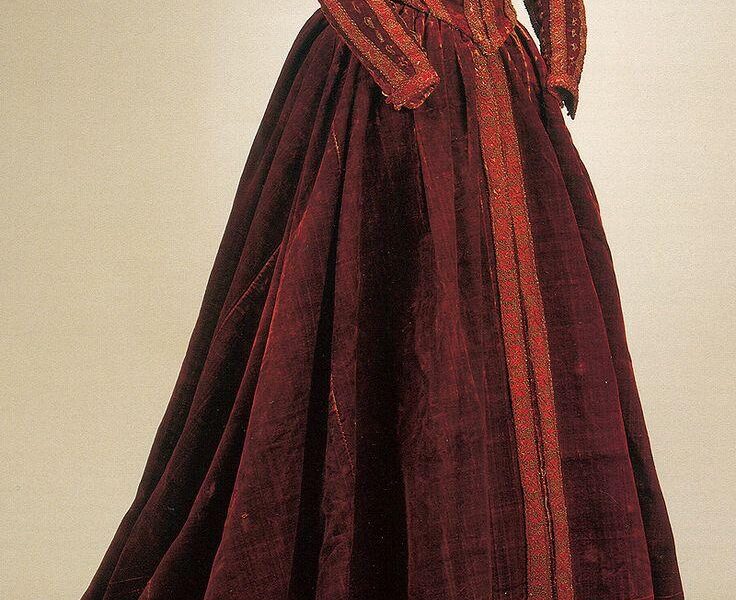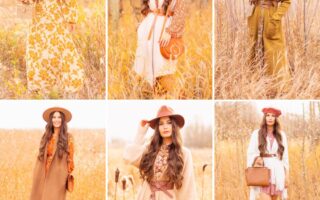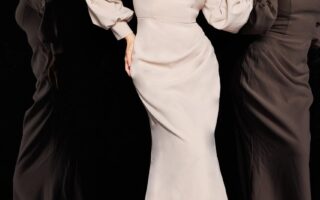Title: The Elegance of Renaissance Fashion: A Journey Through Female Attire
As the sun rose over the vibrant city-states of Renaissance Europe, a remarkable transformation was unfolding, not just in art and philosophy, but also in the realm of fashion. The Renaissance, a period marked by a revival of classical ideals and unprecedented creativity, saw women’s attire evolve into a breathtaking blend of opulence and individuality. From the intricate designs of sumptuous gowns to the delicate adornments that embellished their forms, female fashion became a canvas reflecting social status, cultural influences, and personal expression. In this exploration of Renaissance fashion for women, we delve into the fabrics, silhouettes, and accessories that defined an era rich with elegance and ingenuity, revealing how the sartorial choices of the past continue to inspire modern aesthetics. Join us as we unravel the threads of history, stitching together tales of creativity, craftsmanship, and the enduring legacy of women’s fashion during one of history’s most enchanting epochs.
Table of Contents
- Exploring the Opulence of Renaissance Fabrics and Textiles
- The Evolution of Silhouettes: From Corsets to Flowing Gowns
- Accessories That Define: Jewelry and Headpieces in Renaissance Culture
- Embracing Renaissance Fashion Today: Modern Adaptations and Styling Tips
- Q&A
- In Conclusion
Exploring the Opulence of Renaissance Fabrics and Textiles
The Renaissance period marked an extraordinary evolution in textiles, transforming simple fabric into a canvas for artistic expression and opulence. Fabrics such as silks, velvets, and brocades became the hallmarks of wealth and status, often adorned with intricate patterns and vibrant colors. The significance of these materials went beyond aesthetics; they symbolized power and prestige. Women of the time adorned themselves in layers of luxurious clothing, showcasing a variety of textures and techniques that demonstrated both their social standing and personal style. Notable methods included:
- Embroidered Accents: Adding delicate motifs and symbols to garments.
- Damask Weaving: Creating elegant patterns that shifted in appearance with the light.
- Crimson Dyes: Extracted from exotic sources, these vibrant hues were a symbol of royal lineage.
This era’s fashion was not merely about individual garments; it was a tapestry of cultural exchange and artisanal craftsmanship. Florence, Venice, and Milan emerged as epicenters of textile production, where skilled artisans developed techniques that became the envy of nations. The following table illustrates some key textiles from this opulent period:
| Fabric Type | Characteristics | Common Uses |
|---|---|---|
| Silk | Soft, shiny, and luxurious | Dresses, undergarments |
| Velvet | Rich texture, heavy drape | Cloaks, evening wear |
| Lace | Delicate, intricate patterns | Edgings, veils |
The Evolution of Silhouettes: From Corsets to Flowing Gowns
Throughout the ages, women’s fashion has undergone a remarkable transformation, deftly reshaping the way we perceive beauty and femininity. The late medieval period ushered in the use of corsets, which sculpted the body to fit the ideal silhouette of the time—an hourglass figure accentuated by a tightly fitted waist. As the Renaissance blossomed, these restrictive garments began to evolve, giving way to more fluid forms. In the pursuit of elegance, flowing gowns made their appearance, crafted from luxurious fabrics that draped effortlessly over the body, allowing for a sense of freedom that was unheard of in previous eras.
As styles continued to progress, silhouettes became a canvas for expressing wealth, taste, and individuality. The transition from the sinuous lines of the corset to the lavish, A-line skirts and elaborate sleeves of flowing gowns marked a significant cultural shift. Today’s fashion reflects a rich tapestry of influences, where luminaries of the past inspire contemporary designs. A glance at the contrasting styles can unveil a timeline of societal changes:
| Period | Silhouette | Key Features |
|---|---|---|
| Late Medieval | Corseted | Hourglass figure, high neckline, long sleeves |
| Renaissance | Flowing gown | A-line skirt, soft drapery, rich fabrics |
| Baroque | Elaborate | Puffed sleeves, corsets, intricate detailing |
| Modern Era | Diverse | Variety of silhouettes, inclusivity, self-expression |
This evolution not only reflects changing fashion trends but also mirrors the growing autonomy and empowerment of women throughout history.
Accessories That Define: Jewelry and Headpieces in Renaissance Culture
The Renaissance era was not merely a period of artistic revival but also a time when adornments became a form of expression and status. Women of this time adorned themselves with intricately designed necklaces, elaborate earrings, and dainty bracelets. These pieces were often made from precious metals, showcasing meticulous craftsmanship and precious stones that reflected both the wealth and sophistication of their wearers. Each accessory held significance; a gold filigree necklace could signify nobility, while a string of pearls represented purity and high social standing. Such jewelry was not just ornamental but a vital part of a woman’s identity and cultural standing in society.
Additionally, headpieces during the Renaissance played a crucial role in defining female beauty standards. Ornate headbands, delicate tiaras, and elaborate hairpieces adorned the heads of many women, transforming hairstyles into works of art. The use of soft fabrics and jewels in headpieces signified the wearer’s wealth, with styles evolving from simple fabric wraps to lavish creations featuring feathers and gold details. Some popular styles included:
- The Gabled Headdress: A pointed style that framed the face and was often worn by noblewomen.
- Wimples: A cloth that covered the neck and was draped around the shoulders, exuding elegance.
- Chaperons: A hood-like accessory that offered a combination of style and modesty.
Embracing Renaissance Fashion Today: Modern Adaptations and Styling Tips
In today’s fashion landscape, Renaissance-inspired attire can be effortlessly integrated into modern wardrobes, offering a refreshing blend of historical elegance and contemporary flair. To embody the essence of this era, consider key elements such as structured silhouettes, lavish fabrics, and embellished details. Pair a tailored corset top with high-waisted trousers or a flowing skirt, creating a striking balance between sophisticated structure and modern comfort. A ruffled collar or lace sleeves can serve as a nod to the past while remaining chic, especially when styled with minimalist accessories, which help to keep the focus on the intricate designs.
When it comes to accessorizing, channel the spirit of the Renaissance with vintage-inspired jewelry and dramatic hairpieces. Think bold statement necklaces adorned with pearls or gemstones, and consider incorporating headbands or floral crowns that reflect the era’s penchant for opulence. To further enhance your look, use a palette of rich colors like deep burgundy, royal blue, and emerald green, which were popular during the Renaissance period. The following table highlights some essential pieces and styling combinations to create a modernized Renaissance-inspired outfit:
| Item | Modern Styling Tip |
|---|---|
| Corset Top | Pair with high-waisted jeans or a maxi skirt for versatility. |
| Victorian Skirt | Combine with a simple turtleneck for a contemporary twist. |
| Embellished Sleeves | Wear under a structured blazer for a polished look. |
| Statement Jewelry | Use to elevate a basic outfit; less is more. |
Q&A
Q&A: Exploring Female Fashion in the Renaissance Era
Q: What characterized female fashion during the Renaissance?
A: Female fashion during the Renaissance was marked by a distinctive blend of elegance and extravagance. Women wore intricate gowns that were often layered and embellished with rich fabrics like silk, velvet, and brocade. The silhouette featured a wide neckline, fitted bodices that accentuated the waist, and flowing skirts that could be further enhanced with petticoats. Accessories such as ruffs, sleeves, and elaborate hats completed the look, showcasing the wearer’s wealth and status.
Q: How did social status influence Renaissance women’s fashion?
A: Social status played a pivotal role in determining the materials and styles worn by women. Nobility and wealthy merchants opted for garments made from luxurious fabrics adorned with precious gems and gold thread, illustrating their affluence. In contrast, lower-class women wore simpler, more utilitarian clothing made from coarse fabrics, often dyed in earthy colors. This hierarchical approach to fashion reinforced societal norms and expectations during the era.
Q: Were there any specific cultural influences that shaped Renaissance women’s fashion?
A: Yes, Renaissance fashion was heavily influenced by the revived interest in classical antiquity, particularly through the lens of Italy’s art and culture. The blending of Gothic elements with classic Roman and Greek styles led to a unique aesthetic. Additionally, the flourishing of trade routes brought new textiles and styles from the East, which further enriched the fashion landscape. Artistic innovations of the time, especially in portraiture, also captured and disseminated contemporary trends.
Q: What role did gender play in fashion choices during this period?
A: Gender significantly influenced fashion choices, where women’s clothing often symbolized their roles and expectations in society. While their attire aimed to emphasize beauty and virtue, women’s fashion was also regulated by strict societal norms regarding modesty. For example, the structure of garments was designed to adhere to ideals of femininity, including how the body was presented and how movement was restricted. Nevertheless, there were instances where women asserted agency through fashion, choosing styles that reflected their individuality.
Q: How did the rise of the printing press affect female fashion in the Renaissance?
A: The advent of the printing press in the 15th century facilitated the distribution of fashion illustrations and discussions of style in pamphlets and books. This democratized access to fashion ideas, allowing women from various backgrounds to adopt and adapt trends. As a result, the same styles could circulate across different regions, creating a degree of uniformity in noble and middle-class attire while also inspiring local variations.
Q: Can we see the influence of Renaissance fashion in contemporary clothing today?
A: Absolutely! Elements of Renaissance fashion can be seen in modern clothing, particularly in the use of luxurious fabrics, corsetry, and structural designs. Contemporary haute couture often draws inspiration from the intricate detailing and historical silhouettes of the Renaissance. Additionally, seasonal trends may echo the ornate embroidery and vivid color palettes that characterized the garments of that era, showing how fashion history continues to inspire today’s designers.
Q: What are some notable pieces of Renaissance fashion that are well-known?
A: Some iconic pieces include the bodice, which was often intricately laced and embellished; the farthingale, a framework that supported the voluminous skirts; and ruffs that enhanced the neckline and face framing. Other notable items such as the partlet, which served as a decorative piece of clothing worn over the shoulders, and elaborate headdresses highlight the creativity and craftsmanship of the time.
Q: How did colors and patterns play a role in Renaissance women’s fashion?
A: Colors and patterns in Renaissance fashion were chosen for symbolic significance and social status. Rich jewel tones like emerald greens, deep blues, and warm reds were favored among the upper classes. Patterns, including floral and geometric designs, reflected the artistry of the period. The use of color could also convey messages regarding the wearer’s identity and alliances, with certain hues associated with royal families or specific regions.
Q: What can modern women learn from Renaissance fashion?
A: Modern women can draw inspiration from the Renaissance emphasis on individuality and artistry in clothing. The era reminds us of the power of fashion as a form of self-expression and the importance of craftsmanship. With a renewed interest in sustainability, contemporary women can also appreciate the intricate designs of the past that prioritize quality over quantity, encouraging thoughtful wardrobe choices that celebrate heritage and personal style.
In Conclusion
the fashion of the Renaissance period was a vibrant tapestry woven from the threads of cultural, social, and artistic transformation. Women’s attire during this remarkable era not only reflected individual identity but also served as a powerful expression of the broader shifts in society. From the opulent fabrics and intricate embroidery to the bold silhouettes that shaped the female form, Renaissance fashion offers a glimpse into a world where artistry and self-presentation intertwined. As we look back on these styles, we find inspiration in the creativity and elegance that defined the age, reminding us that fashion is a timeless dialogue between past and present. May the legacy of Renaissance fashion continue to inspire modern silhouettes and empower the voices of women today, encouraging each of us to embrace our unique stories through the art of clothing.


